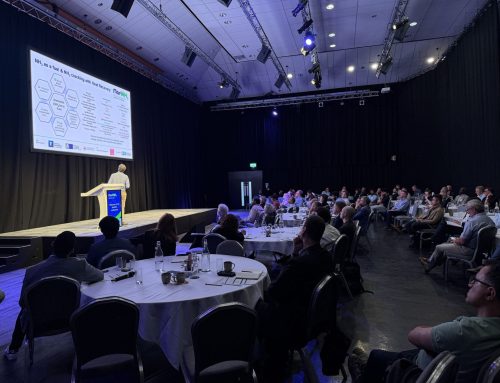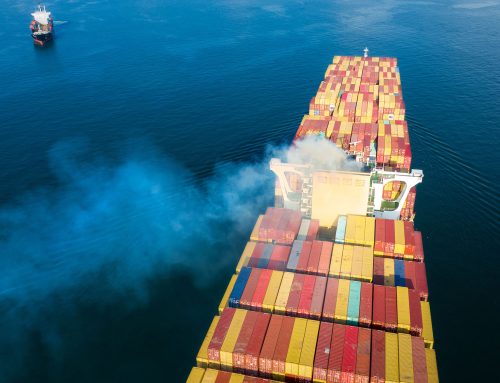The University of Nottingham is leading a new project to investigate the potential of ammonia to fuel and decarbonise the long-haul shipping industry, and to boost the UK’s powertrain sector.
MariNH3 is a £5.5m EPSRC-funded project that aims to develop new and disruptive engine technology that will one day cut pollution emitted by today’s diesel-powered marine vessels.
With 80 per cent of goods being transported by sea, shipping produces more carbon emissions than most countries, and pollutes oceans. In fact, nine per cent of transport CO2 comes from shipping and of that, around 80 per cent of shipping’s greenhouse gases specifically come from merchant vessels, including tankers, cargo ships and passenger liners.
Using the seas to move materials, goods and people is far cheaper than road transport, but it comes at an environmental cost. There is therefore a critical need to push the marine sector towards net zero.
The UK Government’s Department for Transport has established a new £200m body, UK Shore, to decarbonise the marine sector. Meanwhile in the last year, a UK shipbuilding strategy to make the UK an international leader in green maritime has been outlined by Prime Minister Boris Johnson.
Professor Alasdair Cairns, principal investigator on the project and director of Nottingham University’s Powertrain Research Centre, said: “There’s currently significant interest in green ammonia as a fuel for decarbonised commercial shipping. Green ammonia is a gas easily converted into a liquid in a process that is 100 per cent renewable and carbon-free, such as using hydrogen from water electrolysis and nitrogen separated from the air.
“One of the challenges with international shipping is the sheer size and range of the vessels producing the majority of the greenhouse gas emissions and issues with energy density for competing solutions such as electric and fuel cell.
“The problem is, when you look at competing energy vectors like batteries or fuel cells, they just don’t have the energy density. Ammonia could have diesel-like efficiency and energy density, and is cheap and easy to store as a liquid fuel. Electric or fuel cell propulsion would work for smaller boats, but it’s not really an option in mega tonne ships that are sailing across oceans in a single voyage. Our work will provide a road map of vessel size, types and propulsion types.”
In addition to identifying alternatives to fossil fuel power in future fleets, retrofitting existing vessels is a major obstacle to tackle for the project. Big ships have engines that are in service for up to 30 years; many of which will still be out on the seas for decades to come.
The five-year MariNH3 programme, which includes partners such as Cummins, Rolls-Royce, MAHLE Powertrain and the Department of Transport Maritime and Coastguard Agency, hopes to solve this problem by exploring retrofit engine technology solutions that can address issues around engine efficiency, with minimised end energy use and reduced pollution.
A key concern is the current approach being adopted by some marine engine manufacturers, which involves ammonia dual fuelling, which means replacing some of the marine diesel with ammonia as a ‘clean fuel supply’ as a retrofit solution. Typically, up to 40 per cent natural gas (diesel) is still used in these engines, which doesn’t help with local pollution and limits decarbonisation efforts.
As a group, the MariNH3 consortium firmly believe a mix of technologies will be required for the most effective decarbonisation of marine as there is no “silver bullet” fuel or technology to get to Net Zero. However, green ammonia is set to play a key role in marine’s decarbonisation efforts.
In liquid form, ammonia not only has significant cost advantages in terms of fuel storage, it can also be used in existing marine engines, however it burns roughly five times slower under like-for-like conditions than fossil fuels and it produces NOx emissions – both major issues that need to be addressed by the MariNH3 team.
Professor Cairns said: “Ammonia produces NOx, which is a greenhouse gas and pollutant. It also burns five times slower than fossil fuels. Therefore marine engines powered by ammonia need ultra-low NOx combustion systems – a combination system that speeds up combustion.”
Industry partners helping the team to address this challenge include MAHLE Powertrain. MAHLE’s novel ‘Jet Ignition’ technology is a fast burning combustion system currently used in Formula 1 engines, which the team aims to scale and transfer to marine where the fast burning could allow the engine to operate under conditions where NOx can be avoided or reduced.
“Formula 1 has already made the leap in its engine design to be capable of running on sustainable fuels. The technology transfer challenge from automotive to marine is to see if it can be scaled up to the levels needed in long-distance shipping,” acknowledges Professor Cairns.
Another UK company involved is Dolphin-N2, bringing its Split Cycle engine technology to the programme which the team hopes could serve as a long-term replacement solution to achieve diesel-like efficiency whilst being ultra-low NOx.
In parallel to engineering the best technical solutions, the project will hone policy guidance, to develop technologies and a regulatory framework which are “right first time” and appropriately scaled across marine.

